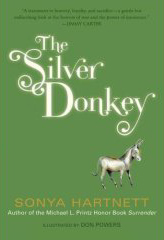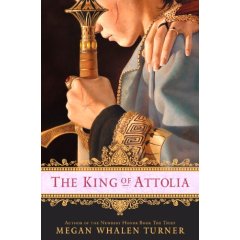Review of Laika, by Nick Abadzis

Laika, by Nick Abadzis
First Second, New York, 2007. 205 pages.
http://www.firstsecondbooks.com/
This acclaimed graphic novel tells the story of Laika, a special little dog chosen to be the first living creature in space.
Laika’s life intertwines with many people — A former prisoner of the gulag who was promoted to Chief Designer in the space program, a little girl who loved the dog with the curly tail at birth, a boy who didn’t want responsibility for a puppy, a dogcatcher who resented the dog’s independent spirit, and an animal trainer who talked to the dogs at night before she went home.
The book tells a sad story. It also makes you think. When is it right to sacrifice the life of a dog — for science, for country, for glory?
I’m beginning to get used to graphic novels. This is a high-quality one and is a nice choice to begin learning the form and how it can tell a story.
Find this review on the main site at:




 The King of Attolia
The King of Attolia